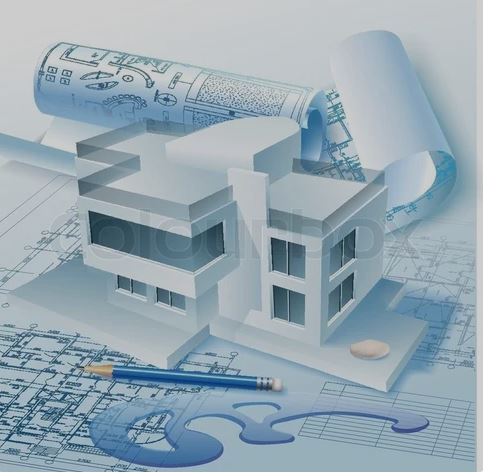Essential Strategies for MEP Design in Texas Buildings
Introduction
In the sweltering heat of Texas, where the sun beats down mercilessly and humidity can feel like a second skin, effective MEP design in Texas buildings is not just a luxury—it’s a necessity. Engineers face the critical challenge of controlling indoor humidity to ensure energy-efficient, comfortable environments across commercial and residential projects.
This blog post will dive deep into essential strategies for MEP design that not only combat excessive moisture but also improve air quality, reduce energy costs, and ensure the longevity of building systems. From understanding the unique climatic challenges of Texas to exploring innovative technologies and best practices. We’ll equip you with the knowledge and tools needed to create spaces that are as comfortable as they are conducive to well-being. Join us as we embark on a journey to master the art and science of humidity control in Texas buildings!
1. Understanding Humidity: The Basics of Moisture Control
Humidity isn’t just a weather issue—it affects comfort, health, and building durability. In Texas, large temperature shifts can worsen moisture problems.
There are two main types of humidity:
- Absolute humidity: the actual amount of water vapor in the air.
- Relative humidity: the percentage of water vapor compared to the maximum air can hold at a given temperature.
During Texas summers, high humidity leads to condensation and mold. In cooler months, dry air causes discomfort and health concerns. The ideal indoor humidity is between 30% and 50%. MEP systems must be designed to maintain this balance.
2. The Importance of Humidity Control in MEP Design for Texas Buildings
Humidity control is a critical aspect of Mechanical, Electrical, and Plumbing (MEP) design, especially in the diverse climate of Texas. With its sweltering summers and variable humidity levels, the Lone Star State presents unique challenges for building designers and engineers. Effective humidity control not only enhances comfort but also plays a vital role in preserving the structural integrity of buildings and safeguarding the health of their occupants.
Excess humidity can lead to a host of problems, including mold growth, musty odors, and even damage to building materials. In Texas, where humidity levels can soar, particularly in coastal regions, maintaining optimal indoor air quality is essential. High moisture levels can create an environment conducive to dust mites, allergens, and other pathogens, which can exacerbate respiratory issues for residents and employees alike.
3. Key Factors Influencing Humidity Levels in Texas
Understanding the key factors influencing humidity levels in Texas is crucial for effective MEP (Mechanical, Electrical, and Plumbing) design. The Lone Star State, known for its diverse climate zones, presents unique challenges when it comes to managing indoor humidity. Here are some of the most significant factors to consider:
Geographic Variability:
Texas spans multiple climate regions, from the humid subtropical areas of the east to the arid deserts in the west. In cities like Houston, where humidity can soar above 90% during summer months, the challenge is to keep indoor environments comfortable and prevent mold growth. Conversely, in the dry regions of West Texas, the focus shifts to maintaining moisture levels to support occupant health and comfort.
Seasonal Changes:
Texas experiences significant seasonal variations: During the summer, high temperatures combined with moisture from the Gulf of Mexico create sticky conditions that require robust HVAC systems to dehumidify the air. In contrast, winter months might bring drier air, necessitating systems that can introduce humidity back into the indoor environment to prevent issues like dry skin or respiratory discomfort.
Building Orientation and Design:
Structures with large windows facing the sun can trap heat and moisture, leading to higher indoor humidity. MEP designers must consider factors like shading, insulation, and ventilation to optimize airflow and reduce moisture buildup. For example, incorporating overhangs or awnings can help mitigate excessive heat gain while allowing for natural ventilation.
4. Designing for Humidity: MEP Design Fundamentals for Texas Buildings
In Texas, MEP systems must work together to control indoor humidity. Mechanical, electrical, and plumbing systems can’t be designed in isolation.
Integrating moisture control into the overall system helps:
- Enhance occupant comfort.
- Lower energy use.
- Extend building life.
Proper planning ensures that systems can adapt to Texas’s shifting climate conditions and keep humidity within the ideal range.
5. HVAC Selection for Effective MEP Design in Texas Buildings
An effective HVAC system in Texas must cool the air and remove excess moisture. High humidity makes systems work harder, increasing energy use.
Smart HVAC Options
- VRF (Variable Refrigerant Flow) systems adjust cooling and dehumidification based on each room’s needs.
- ERV (Energy Recovery Ventilators) reclaim energy while managing humidity levels.
- Dehumidifiers, whether built-in or standalone, tackle moisture in key areas like bathrooms or basements.
These systems should be maintained regularly to ensure optimal performance.
6. Effective Insulation Techniques to Combat Humidity
Insulation is a powerful defense against unwanted humidity.
Spray Foam Insulation
Spray foam expands to seal gaps, providing both thermal and moisture barriers. It helps prevent mold by reducing condensation.
Fiberglass Batts + Vapor Barriers
Fiberglass batts can work well when installed properly. Adding a vapor barrier—like polyethylene sheeting—protects against moisture getting trapped inside walls.
Together, these techniques help maintain a stable indoor climate.
7. Utilizing Dehumidifiers: When and How to Implement
In the heart of Texas, where the climate can swing from arid to humid in a heartbeat, effective humidity control is not just a luxury—it’s a necessity. One of the most efficient tools in your humidity control arsenal is the dehumidifier. Understanding when and how to implement these devices can significantly improve indoor air quality and overall comfort in your building design.
**How to Implement Dehumidifiers:**
1. **Choose the Right Type:** There are several types of dehumidifiers available, including portable units, whole-home systems, and industrial-strength options. Assess the size of the space, the humidity levels, and the specific needs of your building to select the most effective model.
2. **Strategic Placement:** For maximum effectiveness, place portable dehumidifiers in areas where moisture accumulates the most. For whole-home systems, consider integrating them with your existing HVAC system for uniform humidity control throughout the building.
3. **Regular Maintenance:** Just like any mechanical system, dehumidifiers require regular maintenance to operate efficiently. Ensure filters are cleaned or replaced, and check for any blockages in drainage lines to prevent water damage and maintain optimal performance.
4. **Monitor Humidity Levels:** Utilizing hygrometers can help you track humidity levels in real-time. Incorporate smart technology that allows for remote monitoring and control, ensuring your dehumidifiers are working effectively and adjusting as needed.
5. **Educate Occupants:** It’s essential to inform building occupants about the importance of humidity control and how dehumidifiers work. Encourage practices like closing windows during humid weather and using exhaust fans in high-moisture areas, such as kitchens and bathrooms.
By thoughtfully integrating dehumidifiers into your MEP design, you can create a comfortable and healthy indoor environment, prolong the lifespan of building materials, and enhance the overall energy efficiency of your Texas structures. Emphasizing humidity control not only meets regulatory standards but also significantly boosts occupant satisfaction and well-being.
8. Integrating Smart Technology for Humidity Monitoring
Integrating smart technology for humidity monitoring is a game-changer in the realm of MEP (Mechanical, Electrical, and Plumbing) design, especially in Texas. Where fluctuating humidity levels can significantly impact indoor air quality and occupant comfort. By leveraging advanced smart technologies, building designers can implement real-time monitoring systems that continuously track humidity levels throughout the space.
Imagine a network of sensors strategically placed throughout a building, each equipped to measure temperature, humidity, and even air quality. These sensors communicate with a centralized system, providing instant feedback and allowing for immediate adjustments to HVAC settings. This not only ensures optimal humidity control but also enhances energy efficiency, as the system can respond dynamically to changing conditions rather than relying on static settings.
Smart technology can also facilitate predictive analytics, helping facility managers anticipate humidity fluctuations based on weather patterns and occupancy levels. For instance, if a sudden spike in outdoor humidity is forecasted, the system can preemptively adjust indoor conditions to maintain a comfortable environment, reducing the risk of mold growth and structural damage.
9. Outdoor Air Management: Balancing Fresh Air and Humidity
In the realm of MEP (Mechanical, Electrical, and Plumbing) design, outdoor air management is a critical aspect that requires careful balancing of fresh air intake and humidity control. In Texas, where the climate can fluctuate between sweltering heat and high humidity, effectively managing outdoor air is essential not just for comfort, but also for energy efficiency and the longevity of a building.
When designing HVAC systems, it’s vital to consider the quantity of outdoor air being introduced into a space. While fresh air is necessary for maintaining indoor air quality, excessive outdoor air can inadvertently increase humidity levels, leading to discomfort and potential mold growth. Striking the right balance involves employing advanced ventilation strategies that account for both the volume and conditions of the incoming air.
10. The Role of Ventilation in Humidity Control
Ventilation plays a pivotal role in effective humidity control, especially in the diverse climate of Texas, where high humidity levels can become a persistent challenge for building performance. Proper ventilation strategies not only help maintain indoor air quality but also regulate moisture levels, preventing the growth of mold and mildew, which can compromise both occupant health and structural integrity.
In Texas, where humidity can fluctuate dramatically between seasons, integrating a well-designed ventilation system is essential. This involves both natural and mechanical strategies. Natural ventilation, utilizing windows, vents, and strategically placed openings, allows for the free flow of outdoor air, which can help dilute indoor humidity levels. However, relying solely on natural ventilation may not be sufficient during the sweltering heat of summer or the occasional humidity-laden spring days.
In conclusion, mastering humidity control is vital for the success of MEP design in Texas buildings, where the climate can be both challenging and unpredictable. By implementing the essential strategies outlined in this post—ranging from selecting the right HVAC systems to employing effective insulation and ventilation techniques. you can create comfortable, energy-efficient spaces that promote the well-being of occupants while minimizing operational costs. As you embark on your next project, remember that thoughtful attention to humidity control not only enhances indoor air quality but also prolongs the lifespan of your building systems.

















































